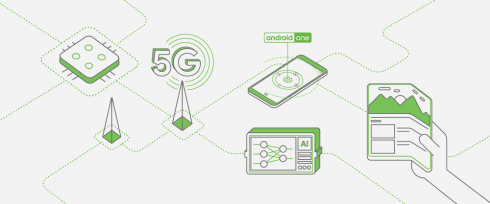
The future of Android-powered devices includes greater accessibility to the broader features of its mobile operating system. Google laid out its plan for upcoming developments and features in the Android ecosystem during MWC Barcelona this week. In addition to highlighting new kinds of hardware, such as the folding-screen smartphones from Samsung and Huawei, the company plans to focus on 5G, security, AI, digital wellbeing and AR.
“Android’s mission has always been to work closely with a broad and open ecosystem of partners to push the boundaries of hardware and software, bringing new experiences and capabilities to your mobile device,” Jamie Rosenberg, vice president of Android and Play Business, wrote in a blog post. “Together with manufacturers, carriers, chipset makers and developers, we want to build mobile experiences that are both productive and helpful — whether that’s giving you new ways to explore the world, helping you stay on top of a busy day or providing the tools to maintain a healthy relationship with technology.
Rosenberg explained that Google hopes to accelerate the adoption of 5G networks over the coming year. The company has already partnered with Samsung, Xiaomi, LG, Huawei, Qualcomm, Sony, HTC, OnePlus and Vivo to bring 5G Android devices to market throughout 2019.
“As the industry progresses towards faster and better connectivity with new devices and chipsets, 5G will accelerate the potential of richer entertainment and communication experiences,” Rosenberg wrote.
Google has also partnered with companies such as Samsung, Huawei, America Movil, Deutsche Telekom, Orange, Telefonica, Telenor, and Vodafone to expand Rich Communication Services, now available in 24 countries. RCS improves functionality like group chats, read receipts and high-quality media sharing, amongst others, according to Rosenberg.
Google’s initiatives for improved security and access to features for even low-end devices includes the Android One program for collaborating with manufacturers to keep Android up-to-date and feature-compatible on their devices, as well as Android Go Edition, a lightweight version of the operating system designed for devices with less than 1GB of RAM.
“Thanks to our partners—including Xiaomi, LG, Motorola and HMD Global—Android One activations grew 250 percent year over year. With the addition of the Nokia 9 PureView, Nokia 3.2, Nokia 4.2 and more, Android One will continue to bring people a consistent smartphone experience that’s fresh and secure,” Rosenberg wrote.
Android Go will be shipping in the Nokia 1 Plus and the BLU Vivo Go. “Today, over 50 percent of entry-level Android devices are now activating with Go,” Rosenberg wrote.
Further user-focused developments in the Android ecosystem include a focus on Google’s Digital Wellbeing initiative, which will soon expand from the Google Pixel and Android One lines in the Moto G7 family. The Digital Wellbeing features allow users to monitor their activity to be more actively mindful of their screen time.
Finally, Rosenberg outlined initiatives which will give users better access to the power of the Google Assistant AI, which includes over 100 million devices from a range of manufacturers launching new devices with a dedicated Google Assistant button on-board.
“And to support future AI-driven mobile experiences, we worked with manufacturers like Qualcomm and Mediatek to bring support for Android’s Neural Networks API and ML Kit,” Rosenberg wrote. “This integration lets phone manufacturers and app developers build faster, smarter and smoother experiences on mobile. For example, LG adopted these technologies to bring Google Lens suggestions into the camera app on the LG G8 ThinQ, allowing people to simply point the camera, and with a single tap, call or save a phone number on a takeout menu, send an email right from a flyer, or open an address in Google Maps.”





